When the opportunity presents itself to ask a few questions to someone who contributed to the awesomeness of the '80s, I will continue to share those answers with you right here. Again, lucky for me (and hopefully you), I do get to share a little more awesomeness with you.
This time that awesomeness is Nick Beggs. He is best remembered by '80s fans as the bass guitarist and later lead vocalist for the band Kajagoogoo. He co-wrote many of the band’s songs and is even responsible for coming up with the band’s unique and memorable name. Kajagoogoo, which also included Steve Askew (lead guitar), Stuart Neale (keyboards), Jez Strode (drums) and Limahl (lead vocals), was signed to a record label in July 1982 and their debut single, “Too Shy” was released in 1983 becoming a smash hit. In the U.S., the band is widely considered a one-hit wonder and originally split up back in 1986. Beggs has gone on to be a well-respected musician and world-renowned bassist as he continues to perform regularly. You will find out more about Kajagoogoo’s rise to fame and some of what he has done since then as we get on to some selections from my interview with Nick Beggs…
 Q: When did you know you wanted to be a professional musician? When and how did you get your start in the music industry?
Q: When did you know you wanted to be a professional musician? When and how did you get your start in the music industry?Nick: I knew at the age of 15 that I wanted to be a pro-player. I turned professional at 20 and moved to London with Kajagoogoo in 1982 on signing our deal with EMI.
Q: Please discuss your personal musical influences and who molded and inspired your voice, your bass playing and career.
Nick: My first musical influences were the BBC Radiophonic workshop. I bought the Doctor Who theme as a 45 rpm single and played it to death. I still have it. Later I fell in love with Tubular Bells and Hergest Ridge by Mike Oldfield. I used to play drums along to them. I also bought “Son of My Father” by Chickory Tip and David Bowie “Fame”. However the biggest influence came when I heard Close to the Edge by Yes. It was at that point I knew I wanted to do that for a living. Chris Squire became my bass hero. Later Jaco Pastorius, Tony Levin, John Paul Jones, Geddy Lee, Roger Waters, Geezer Butler, Burke Shelly and Roger Glover all had their affect on my development.
Q: When and how did you meet Steve Askew, Jez Strode and Stuart Neale? Then at what point did Limahl join the group?
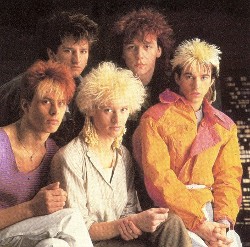
Nick: I knew all of them from our home town. They were older than me and played in bands that I would go and see in the locality. I looked up to them as a younger aspiring player. Limahl was found after we held auditions for a front man. Steve and I had been doing it up to that point but it wasn’t working.
Q: What were your goals/intentions for the band when you were first starting out?
Nick: To make a living. So we had two bands. One was a covers band that played the workingmen’s clubs, called the Handstands. The other was earlier Art Nouveau and later called Kajagoogoo.
Q: How and why was the band name Kajagoogoo chosen? What inspired it?
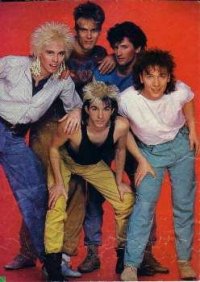
Nick: I came up with it and it was voted as a cool name at the time. I just pulled it out of the air actually.
Q: What are your thoughts on the band name today and have you ever regretted choosing it for any reason?
Nick: I can’t really comment. Would it have been more successful another way or not at all? I’m grateful that I’m still making money from something I dreamed up 30 years ago.
Q: Did you really take a day job as a trash collector prior to Kajagoogoo being signed to EMI Records?
Nick: Yes, after I dropped out of art school and my Mum died. I had to support my sister and run a house. I always was and still am a pragmatist.
Q: How did you get hooked up with Nick Rhodes to produce your debut album? Were you a fan of Duran Duran at that time (or since)? What impact do you feel that either Rhodes or Colin Thurston had on the success of White Feathers?
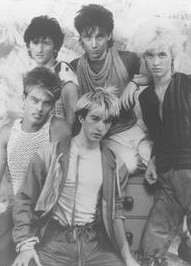
Nick: Limahl ran into Nick at a London night Club and gave him our demo. Yes, we all were Duran Duran fans. It was a very important contribution actually. Colin and Nick did a great job.
Q: Your debut single, “Too Shy”, would go on to be the band’s biggest hit. You are credited as the song’s co-writer with Limahl. Please take us back to when the song was written and recorded. What is the back story about how that song was conceived and written?
Nick: I thought of the chorus and what became the second verse and sang them to Limahl. He responded instantly to it. We then developed the arrangement with the guys. Stuart’s synth opening came much later and the song was demo’d four times before it came close to what you now know. I was playing around with alliterative sounding phrases and liked the sound of shy shy. Pop is founded on repetition and so I wanted a hooky chorus for the song.
“Too Shy” was released in January of 1983 as the band’s debut single which would be included on their album White Feathers. It was an immediate hit reaching the top of the UK Charts by the end of February and holding that spot for two weeks. The single would spend five weeks at the top of German pop charts and would peak at #5 on the Billboard Hot 100 in the U.S. making Kajagoogoo a worldwide success. The iconic song ranked at #27 on VH1’s 100 Greatest Songs of the 80s and at #9 on VH1’s 100 Greatest One Hit Wonders of the 80s lists. Here is the video for “Too Shy” by Kajagoogoo…
Q: What inspired “Too Shy”? How long did it take to write? How did it evolve during the process?
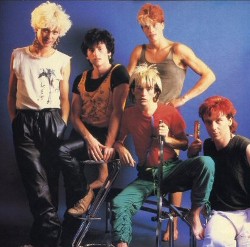
Nick: The desire to write a pop hit actually inspired it. It was rewritten and rewritten over six months. Even in the studio on the day of the final takes we were still working it out. It grew very naturally from session to session. I can remember taking the final mix next door to play to Thomas Dolby. He sat very still and listened to it intently. At the end he nodded his head. He later emulated the bridge bass section on “Dissidents”. I love that track!
Q: When you recorded “Too Shy”, could you have ever anticipated the incredible reaction this album would have? Not just in the UK , but in the U.S. as well?
Nick: Not really. But I remember thinking we had captured something of the time. We would have been happy with a Top 20 record.
Q: What do you feel makes this song so special and loved by so many?
Q: When you have a mega hit song like that, do you (or did you) ever get sick of playing them? What are your feelings regarding “Too Shy” today 28 years later?
Nick: Yes, naturally you can get sick of playing it. But that song and the Kajagoogoo catalog has fed five families and it still is. How can you knock that, even if you don’t like it? All I ever wanted to do was make a living as a player. 30 years on I’m happy to be doing so and thanks in part to “Too Shy”.
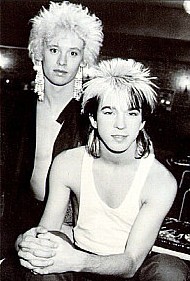 Q: How did things change for you personally and for Kajagoogoo after this song’s incredible worldwide success? Were you prepared for all of the attention? Did you enjoy all of the attention?
Q: How did things change for you personally and for Kajagoogoo after this song’s incredible worldwide success? Were you prepared for all of the attention? Did you enjoy all of the attention?Nick: We had personal security men wherever we went in various cities. We had police escorts and VIP treatment invites anywhere we wanted. No, I was not really prepared for it and I didn’t much like it either. It doesn’t suit me.
Q: Now how does the band go from having one of the hottest debut albums to firing the lead singer? This had to be more than your average tension between band members to fire Limahl. Please describe the circumstances surrounding this transition.
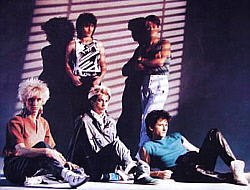
Nick: That’s a good question and it was a difficult choice to make. But things had become unbearable. I feel that it would be ungentlemanly of me to go into too many details. Suffice to say things could not continue as they were.
Q: You took over as lead singer at that point. Was this something you really wanted at that time?
Nick: No. The band told me that if I took over vocal duties they would have a Chapman Stick made for me to play on the next album, so I agreed.
Q: Even though you had several other hits in the UK, were you surprised or frustrated that Kajagoogoo would not have another pop hit in the U.S.?
Nick: Not really. The writing was on the wall because Frankie went to Hollywood. But I think we all enjoyed the recording process for those last two albums irrespective of their chart positions. We were happier for a while at least.
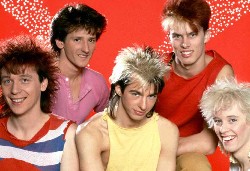 As mentioned, Kajagoogoo would not have any more pop hits in the U.S., but the White Feathers album generated two more Top 20 singles in the UK with “Ooh to Be Aah” and “Hang on Now”. Interestingly, this album also includes the self-titled instrumental which you may recognize as it was used during the opening title scene of the 1984 John Hughes classic Sixteen Candles. After Limahl was fired, the band would release two more albums in 1984 and 1985 with Beggs on lead vocals. Kajagoogoo would officially split up in 1986. Beggs went on to form Ellis, Beggs & Howard which would score a minor UK hit with “Big Bubbles No Troubles” in 1988.
As mentioned, Kajagoogoo would not have any more pop hits in the U.S., but the White Feathers album generated two more Top 20 singles in the UK with “Ooh to Be Aah” and “Hang on Now”. Interestingly, this album also includes the self-titled instrumental which you may recognize as it was used during the opening title scene of the 1984 John Hughes classic Sixteen Candles. After Limahl was fired, the band would release two more albums in 1984 and 1985 with Beggs on lead vocals. Kajagoogoo would officially split up in 1986. Beggs went on to form Ellis, Beggs & Howard which would score a minor UK hit with “Big Bubbles No Troubles” in 1988.Q: Some '80s pop superstars “run away” from the '80s and some embrace the success and fans from that decade. If at all, how do you personally deal with and keep the '80s alive and in perspective?

Nick: I have no desire to keep the '80s alive or in perspective. '70s Prog was, is, and always will be the music I value most of all. The '80s was the decade in which I became a professional player but I don’t have any great passion for the music.
Q: I am a big fan of Howard Jones. I read that you and he became friends back in 1996. What can you tell us about Howard Jones as a musician and as a person? How was your experience touring with his band?
Nick: He is a dear friend and someone who has taught me a lot about music, life and spiritual being. My experience with him is amongst the best I’ve ever had. He is someone I value very much in my life, even though we don’t see each other very much these days due to geography.
Q: The lists of artists/bands you have worked with is quite impressive especially to an '80s fan like I am. What can you tell us about your work with any of the following: Martin Fry & ABC, Belinda Carlisle, Go West, T’Pau, Tina Turner, Tony Hadley, Alphaville (just to name a few)?
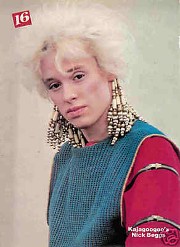
Nick: Martin Fry asked me to join ABC in 2002. I stayed with them for five years despite collapsing on stage one night and vomiting into a bucket due to a viral infection. Belinda Carlisle took me to Malibu to record her [1996] album A Woman and a Man. We spent a month there living in luxury during a spectacular recording session that included Brian Wilson and Isaac Hayes. It was very demanding playing for Go West as Peter Cox wanted every last note to be just so. Even though I had transcribed the parts, he was very detailed in what he wanted on top. He was quite amazing. I have a lot of respect for that guy.
I had a band called Ellis, Beggs & Howard which toured with T’Pau in 1988. Later on, I played for Carol Decker on tour. Her voice can lift the roof off any venue. I played a session for Terry Briton on a track called “Something Beautiful Remains” by Tina Turner. I don’t think he liked what I contributed however and don’t even know if I ended up on the record. Tony Hadley and I go back a long way. Spandau Ballet and the Goo were always running into each other on the road. I played bass for Tony a couple of times live in later years. It’s a funny old world. I was Musical Director for Alphaville for a few weeks and would fly to Berlin to work with Marion Gold in preparation for a tour. However, when Belinda Carlisle asked me to join her band, I jumped ship. But the guy I put in my chair is still with them.
Q: I also see that you are currently a member of the Kim Wilde band. What can you tell us about your experience working with Kim Wilde?
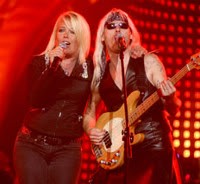
Nick: I’ve been with Kim for five years. She is like a sister to me. We have a lot of fun touring. I think I’ve had more fun with the Wilde Bunch than any other band I’ve toured with. Toooooo much fun!
Q: What has your experience been performing at the Festivals with those other great bands who had such great success in the '80s? New appreciation for each other’s music? New friendships?
Nick: Yes. Always. Always Always.
Q: I have developed a great appreciation for the contribution of the bass groove in a great song. I have already interviewed other great bassists to come from the '80s like Mark King, Deon Estus, Richard Page, John Wetton, Andy McCluskey and Curt Smith. Do you have anything to say about your fellow bassists?
Nick: Mark King is a good pal of mine. His influence can never be overstated. Kajagoogoo played a tour with Level 42 back in 1984. Last year, we played two shows with the band again. It was like old times.
Q: Please tell us about the role you feel the bass plays in a great song and how you go about playing that role.
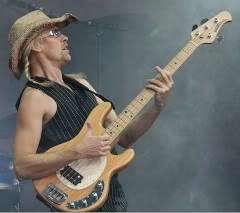
Nick: The very nature of bass dictates what the chord is, so for that reason it is a very important instrument. Good bass players usually have an original sound, so that is equally important in making a song sound good. But most of all I think you have to be prepared to take chances.
Q: After over three decades in the business, from your perspective, how has the music industry changed over that time? And how do you see the future?
Nick: The industry has become more corporate on one hand. Margins are paramount. I worked as an A&R man for PolyGram Records for a while and saw just how it works on the inside. But that’s the same the world over. It will become harder and harder to make a living in the music industry. But the industry will have to adapt. There a lot of people who all want a bit of a tiny, tiny cake. And the cake is shrinking. The music business will need original thinkers.
Q: In 2004, the original 5 members of Kajagoogoo reunited for the VH1 Bands Reunited show. Then, not too long after that, Kajagoogoo including Limahl decided to reunite and in 2008, the band recorded a 4 track EP of new material and toured Europe together again. What brought about this reunion and what are your feelings towards this experience?
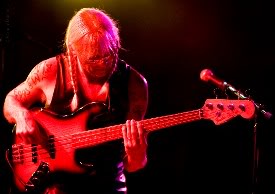
Nick: It was the desire to work together again as we once did 28 years ago. I’m glad we did it. I have no regrets. It was fun once again. Now we are all on good terms. And that’s the way it should be.
Q: Is there the possibility of more new music from Kajagoogoo to come?
Nick: No.
Q: What else is Nick Beggs up to nowadays?
Nick: I’ve written and illustrated a children’s novel which I hope to publish next year. I have a great literary agent. I’m playing for Steve Hackett [ex-Genesis guitartist] and touring with Steve Wilson of Porcupine Tree. Kim Wilde also has asked me to tour with her this December and March. In addition, I’m looking forward to presenting my own new band. It’s rather special. We are recording right now.
I am honored that Nick took some time to answer my questions so I could share them with you here. Special appreciation goes to his wife Ann Beggs for helping to coordinate the interview. You can find out lots more about him at his official Nick Beggs website or more about Kajagoogoo at their official Kajagoogoo website. I want to take this opportunity to again thank Nick Beggs for his contributions to '80s pop culture especially through Kajagoogoo and, even more, for going back to the '80s for a little while with us here as well.
Follow @OldSchool80s on Twitter for a daily dose of '80s nostalgia and read more Retro Interviews on RD80s.

 shareasale.com
shareasale.com StickerShoppe.com
StickerShoppe.com
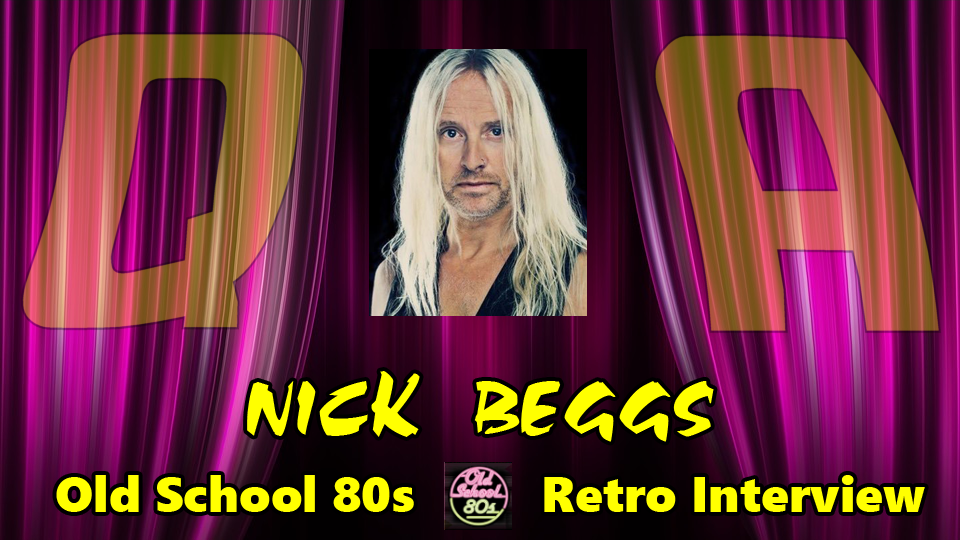

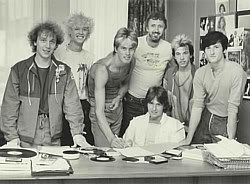
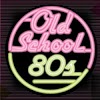
 Elfi Santa
Elfi Santa

0 Comments